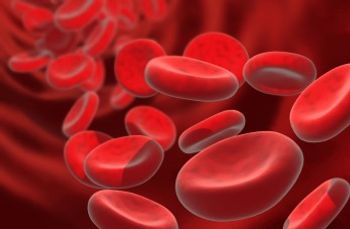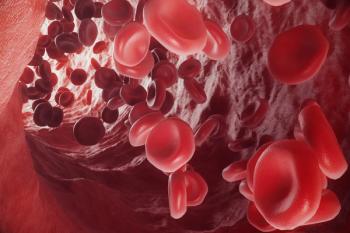
Oncology NEWS International
- Oncology NEWS International Vol 9 No 2
- Volume 9
- Issue 2
Better Symmetry With Tissue Reconstruction vs Implants
Better Symmetry With Tissue Reconstruction vs Implants
NEW ORLEANSComputer-generated measurements evaluating breast symmetry offer objective evidence that breast reconstruction using natural tissue rather than implants creates better aesthetic results, according to preliminary findings of the Michigan Breast Reconstruction Outcome Study (MBROS). The findings were presented at the 68th Annual Scientific Meeting of the American Society of Plastic and Reconstructive Surgeons (now known as the American Society of Plastic Surgeons).
These objective data mirror the researchers data on patient satisfaction, which were presented at the annual meeting of the American Association of Plastic Surgeons in Colorado Springs in May of this year.
It is important to use valid and reliable methods to measure the long-term success of these surgeries, principal investigator Edwin G. Wilkins, MD, said in an interview with ONI. Dr. Wilkins is associate professor, Division of Plastic Surgery, University of Michigan, Ann Arbor, and research investigator, Center for Practice Management and Outcomes Research, Ann Arbor Veterans Administration Medical Center. Third-year medical student Jennifer Reynolds presented the data at the meeting.
Subjective ratings of surgical results among plastic surgeons have yielded poor inter- and intra-rater reliability, he said. The Michigan study strives to identify more reliable measures of success. Digitized images, in lieu of gold-standard tape measurement and plaster-casting methods, allow an easier means of evaluating measurements of breast symmetry to identify success objectively.
In the current study, the researchers evaluated 2-year postoperative photographs from 84 patients who had undergone breast reconstruction after mastectomy. Photographs were converted to digital images for computer analysis based on anterior and lateral dimensions of linear and volumetric symmetry.
Twenty-seven patients had undergone reconstruction with tissue-expander/implant surgery, 27 had received a free transverse rectus abdominis myocutaneous (TRAM) procedure, and 30 had undergone a pedicle TRAM procedure.
The objective measures revealed that procedures using natural tissue yielded more symmetrical results than implants (P < .028). The pedicle TRAM, in which the patients tissue remains attached to its original site and is tunneled beneath the skin to the chest, produces marginally better symmetry than the free TRAM, in which the tissue is removed and transplanted to the chest (P < .06).
The amazing part is that patient satisfaction matched these objective results. This is not something I would have predicted, Dr. Wilkins said. Results presented in May showed that women who chose TRAM procedures were 2.7 times more likely than women who chose implants to be generally satisfied with their results 1 year after surgery (P < .033).
Skepticism of Computer
Others are more skeptical about depending on a computer to determine aesthetic success. Stephen Kroll, MD, professor of plastic surgery, M.D. Anderson Cancer Center, is concerned that detailed computer analyses fail to account for the role of the surgeons artistic ability, skill, and dedication in reconstruction success and the factors the patient herself considers when determining the success of her reconstruction.
I think it would be a mistake if we leave this presentation thinking that pedicle TRAMs give better results than free TRAMs, Dr. Kroll said at a public forum held after the presentation. Dr. Kroll said that his own observations regarding free and pedicle TRAM procedures have not matched those of this study.
Dr. Wilkins does not dispute that the surgeons skill plays a tremendous role in success. For that reason, the 12 centers and 24 surgeons participating in MBROS represent the full spectrum of surgical settings, from small, private, single-physician practices to large, urban academic hospitals. By separating the procedures from the surgeons doing them, we are evaluating success more realistically, Dr. Wilkins said. Not all women are going to large, renowned academic hospitals for reconstruction procedures.
Dr. Wilkins does caution that these results are preliminary. So far, MBROS has looked at approximately 400 patients. With larger numbers, these findings could change, he concluded.
MBROS Website
The Michigan Breast Reconstruction Outcome Study (MBROS) website for patient information on making decisions about breast reconstruction may be found at
Articles in this issue
almost 26 years ago
Neoadjuvant Docetaxel Increases Response Rate in Large Breast Tumorsalmost 26 years ago
Faslodex, a Pure Antiestrogen, Shows Antitumor Activityalmost 26 years ago
Consider Node Dissection, Adjuvant Therapy in Elderly Breast Cancer Patientsalmost 26 years ago
Tumor-Associated Proteases Predict Outcome in Node-Negative Patientsalmost 26 years ago
Herceptin Plus Vinorelbine a Promising Combination in Advanced Breast Canceralmost 26 years ago
Small Risk of Breast Cancer Death After Invasive Recurrence in DCIS Patientsalmost 26 years ago
Paclitaxel/Herceptin Effective in Metastatic Breast Canceralmost 26 years ago
Conservative Surgery Alone Not Sufficient to Prevent RecurrenceNewsletter
Stay up to date on recent advances in the multidisciplinary approach to cancer.

















































































